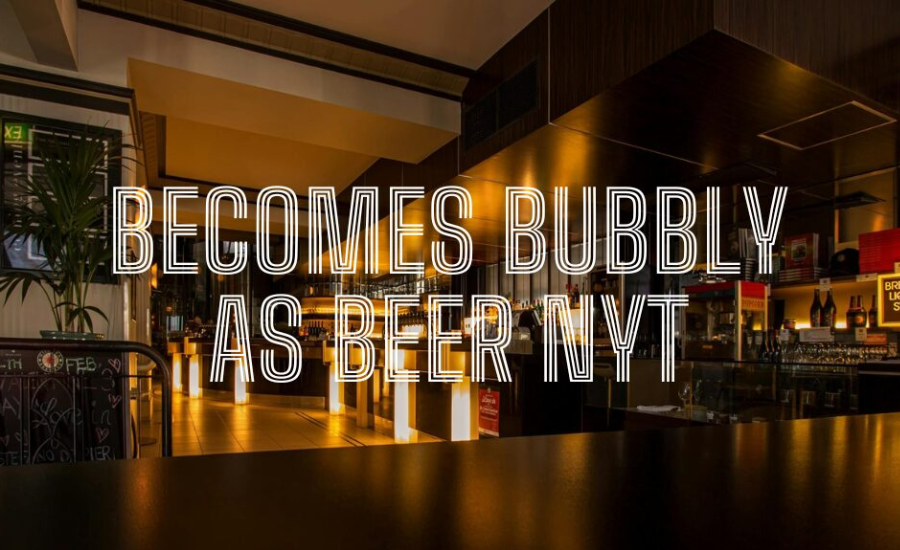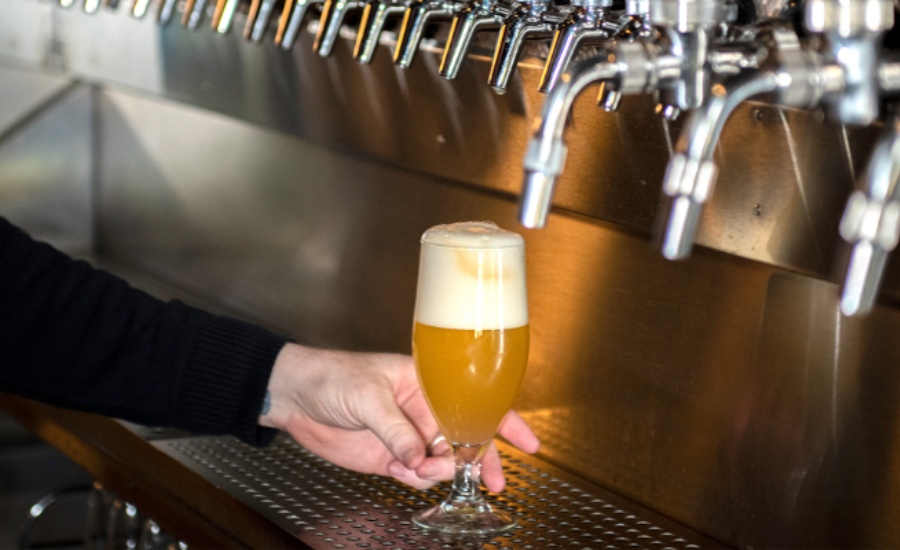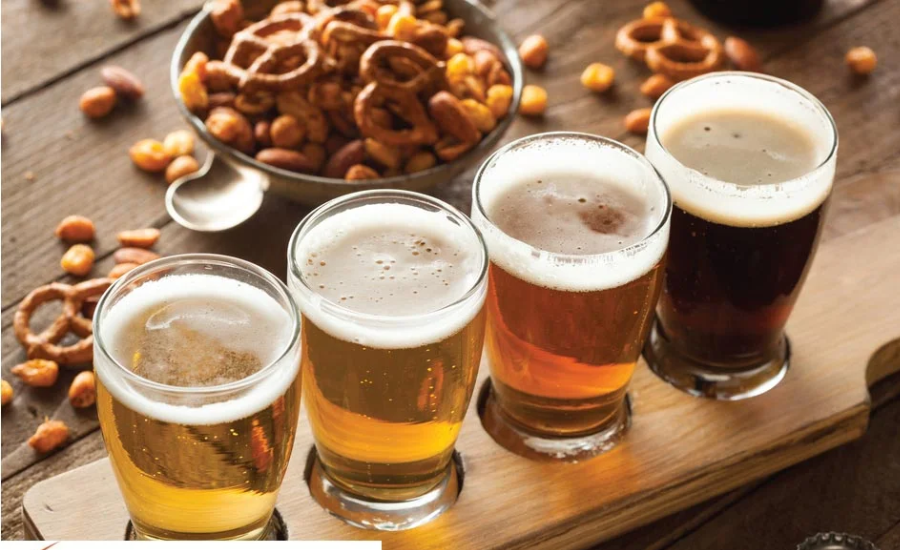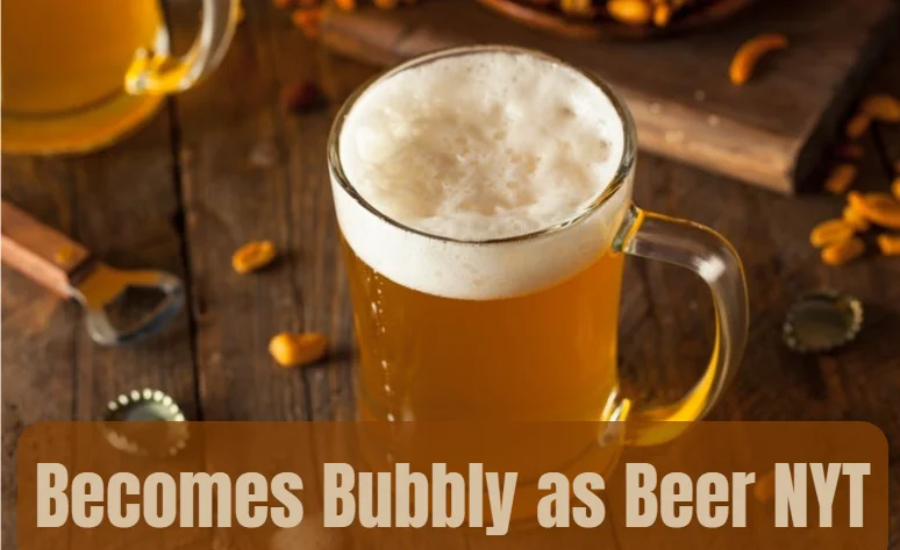There’s something undeniably captivating about a freshly poured beer. Its golden or amber hue sparkles as bubbles rise gracefully to the top, creating an inviting and effervescent head of foam. This bubbling phenomenon, while seemingly simple, is a key aspect of beer’s appeal, enhancing its flavor, texture, and overall enjoyment. But have you ever wondered why beer becomes bubbly when poured? Let’s delve into the science of carbonation and discover what makes beer so effervescent.
Understanding Carbonation In Beer
The characteristic bubbles in beer are a result of a process called carbonation. Carbonation is the presence of dissolved carbon dioxide (CO2) in the liquid. When the pressure is released—whether by opening a bottle or pouring the beer—the CO2 escapes from the liquid and forms bubbles. This effervescent process can occur naturally or artificially, and it plays a crucial role in the beer’s texture and mouthfeel.
Natural vs. Artificial Carbonation
During fermentation, yeast consumes sugars and releases alcohol and CO2 as byproducts. This CO2 gets trapped in the beer, creating pressure inside sealed containers like fermentation tanks or bottles. When the beer is poured or opened, the reduction in pressure allows the CO2 to escape, forming bubbles.
In contrast, artificial carbonation involves injecting CO2 directly into the beer, typically during the packaging process. This method allows brewers to have more control over the carbonation levels and ensures consistent fizz across different batches. Whether natural or artificial, carbonation is integral to a beer’s overall profile, providing a satisfying refreshment.
The Role Of CO2: Becomes Bubbly As Beer?

Carbon dioxide (CO2) is the key ingredient behind beer’s bubbles. During fermentation, yeast produces CO2, which dissolves into the beer under pressure. Once the beer is poured or opened, the pressure decreases, causing the CO2 to escape as bubbles.
Several factors influence how CO2 escapes from beer, including temperature, beer composition, and glassware. Warmer beer tends to release CO2 more quickly, leading to larger bubbles and a faster loss of carbonation. Colder beer, on the other hand, holds onto its CO2 for longer, resulting in smaller, longer-lasting bubbles.
Foam: The Visual And Sensory Appeal of Beer
The foam that forms on the surface of a poured beer is just as important as the bubbles. When CO2 rises to the top, it forms a head of foam, which not only makes the beer visually appealing but also enhances the sensory experience. The foam helps trap volatile compounds that contribute to the beer’s aroma, enriching the drinking experience with every sip.
The amount and stability of foam are influenced by the beer’s composition. For example, wheat beers, which contain more proteins, tend to have a thicker, creamier head compared to lighter beers. The shape and cleanliness of the glass also play a role in foam formation, with certain glasses promoting better head retention than others.
Why Some Beers Are Bubblier Than Others

Not all beers are created equal when it comes to carbonation. Different beer styles have varying levels of carbonation, and the desired level of fizziness depends on the characteristics of the beer. Belgian ales, for instance, are known for their high carbonation, which enhances their complex flavors and aromas. On the other hand, stouts and porters typically have lower carbonation levels, offering a smoother, creamier mouthfeel that complements their malt-forward flavors.
The Impact of Serving Temperature on Bubbles
Temperature plays a crucial role in beer carbonation. Beer served too warm will lose its CO2 more quickly, leading to excessive foam and a loss of fizz. Conversely, beer that is too cold may not release enough bubbles, resulting in a flat, less flavorful beer.
Each beer style has an ideal serving temperature, with lagers typically served colder than ales. The right temperature ensures that CO2 is released at the correct rate, preserving both carbonation and flavor.
Glassware And Pouring Techniques
The type of glass used to serve beer can greatly influence its carbonation. Certain glasses, such as fluted pilsner glasses, are designed to help maintain the carbonation in highly carbonated beers, while others, like pint glasses, are better suited for beers with moderate carbonation.
When pouring beer, technique matters too. Pouring at a 45-degree angle reduces excessive foaming, while straightening the glass midway through the pour helps create the perfect head. Proper pouring not only maximizes the beer’s bubbly appeal but also enhances the aroma by releasing volatile compounds.
Nitrogenated Beers: A Different Kind Of Bubble

While most beers use CO2 to create their signature bubbles, some beers, like stouts, are nitrogenated. Nitrogen creates smaller, more stable bubbles than CO2, resulting in a smooth, creamy mouthfeel. Nitrogenated beers typically have a thick, long-lasting head and a velvety texture that contrasts with the sharp effervescence of CO2-carbonated beers.
Why Beer Goes Flat
Several factors can cause beer to lose its carbonation more quickly. Improper storage, exposure to air, and serving at the wrong temperature can all contribute to a flat beer. Beers with lower initial carbonation or those served in wide-mouthed glasses tend to lose their bubbles faster than others.
Aging and Beer Carbonation
The aging process can also affect carbonation. Over time, CO2 can dissipate, leading to a beer that’s flatter than when it was first brewed. Some styles of beer, such as lambics or other sour ales, are intentionally aged and may develop unique carbonation characteristics as they mature.
The Future of Carbonation in Beer
As brewing technology continues to evolve, so too will the methods used to control and enhance beer carbonation. Innovations in packaging, such as CO2-retaining bottle caps, may help preserve carbonation for longer periods. Additionally, with the rise of craft brewing, there may be more experimentation with carbonation levels, resulting in new beer styles that push the boundaries of effervescence.
Frequently Asked Questions About Becomes Bubbly As Beer
1. Why does beer bubble when poured?
Beer bubbles when poured due to the release of carbon dioxide (CO2) gas. During fermentation, yeast produces CO2, which dissolves into the beer under pressure. When the beer is poured or opened, the decrease in pressure causes the CO2 to escape from the liquid and form bubbles.
2. What is carbonation in beer?
Carbonation refers to the dissolved CO2 in beer, which is responsible for the bubbles and fizz. This carbonation occurs either naturally during fermentation or is added artificially during the brewing or packaging process. It plays a key role in the texture, mouthfeel, and flavor of beer.
3. How does temperature affect beer bubbles?
Temperature significantly affects carbonation. Beer that is too warm will lose its CO2 more quickly, resulting in larger bubbles and less carbonation. On the other hand, colder beer retains CO2 for longer, resulting in smaller, longer-lasting bubbles and a more effervescent appearance.
4. Why does beer foam when poured?
The foam that forms on beer when poured is a result of CO2 escaping from the liquid. As the gas rises to the surface, it creates bubbles that trap proteins and other compounds in the beer, which results in the formation of foam. The amount and quality of foam depend on the beer’s composition, the glass, and how the beer is poured.
5. What’s the difference between CO2 and nitrogen in beer?
While most beers use CO2 for carbonation, some beers, like stouts, use nitrogen. Nitrogen creates smaller, finer bubbles compared to CO2, resulting in a smoother, creamier mouthfeel and a thicker, more stable foam. Nitrogenated beers have a distinct texture and flavor compared to CO2-carbonated ones.
Conclusion
The bubbly nature of beer is much more than a visual delight—it’s a crucial aspect of the beer’s flavor, mouthfeel, and overall experience. Understanding the science of carbonation and the factors that influence it allows beer lovers to appreciate the subtle art behind the perfect pour. Whether naturally carbonated or artificially induced, the effervescence of beer continues to captivate drinkers, making each sip a refreshing and satisfying experience.
Uncover the Latest Celebrity Buzz and Insights at gossips
